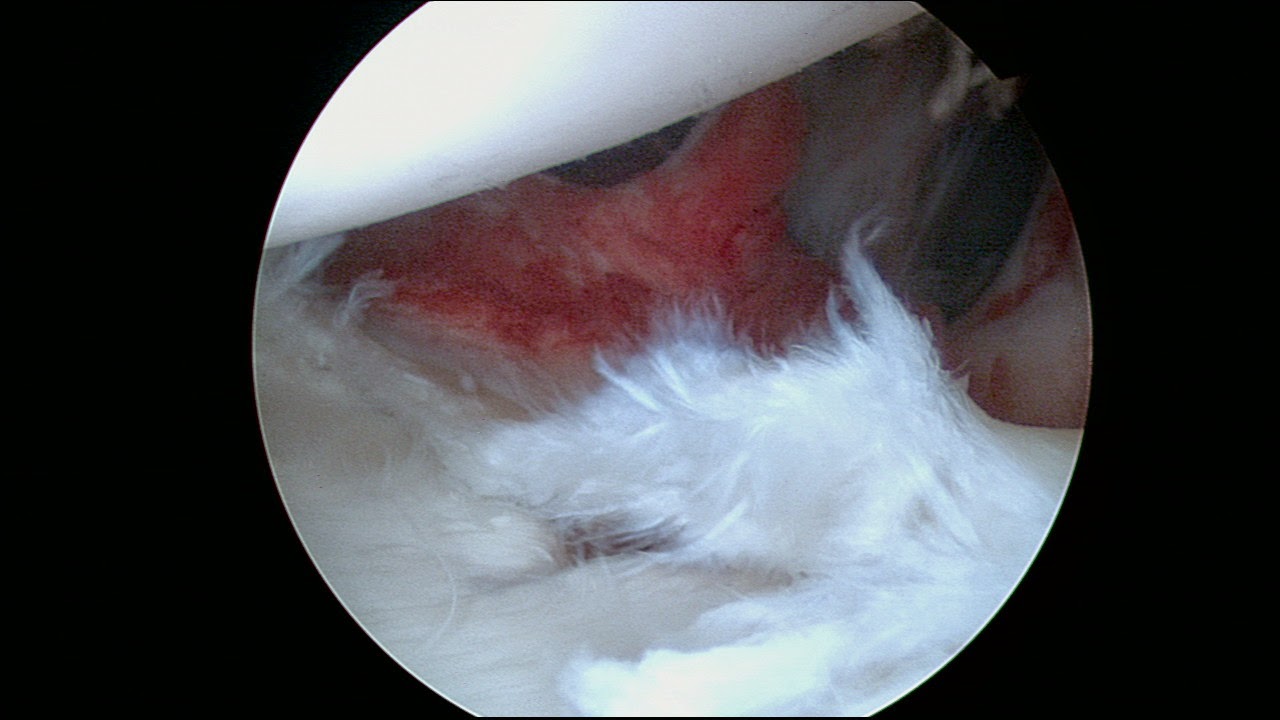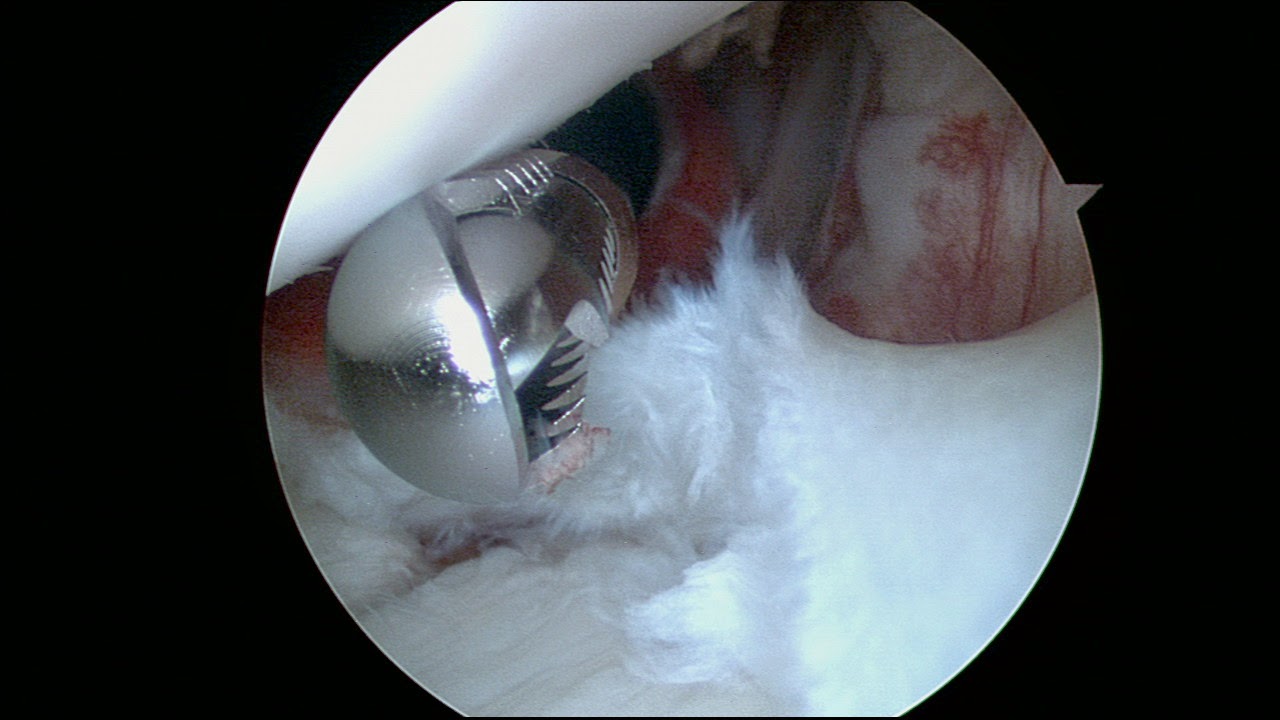The CT scan demonstrated what is reported in the literature as a Bennett lesion indicative of posterior instability of the shoulder or internal impingement of the shoulder. A Bennett lesion is a bony spur that usually forms at the posterior inferior glenoid rim and sometimes becomes painful. Most of the time detachment of the posterior glenoid labrum is seen during arthroscopy associated with posterior capsular tightness.
The CT scan shows the erosion and bony spur at the posterior rim of the glenoid
MRI indicates an associated posterior labrum tear.
The patient underwent a program of 6 weeks of posterior capsular stretching without improvement of his symptoms. He was taken to the operating room for arthroscopic repair of his labrum and removal of the unstable bone or cartilage fragment that was unstable and has been related in the literature with recurrence of the symptoms.
The following pictures demonstrate the cartilage defect after removal of the lesion and the labrum tear. Viewing from the anterior portal.
Final repair of posterior labrum pathology
The patient followed a extensive program of physical therapy and returned to sports 6 months after this repair without pain.
















